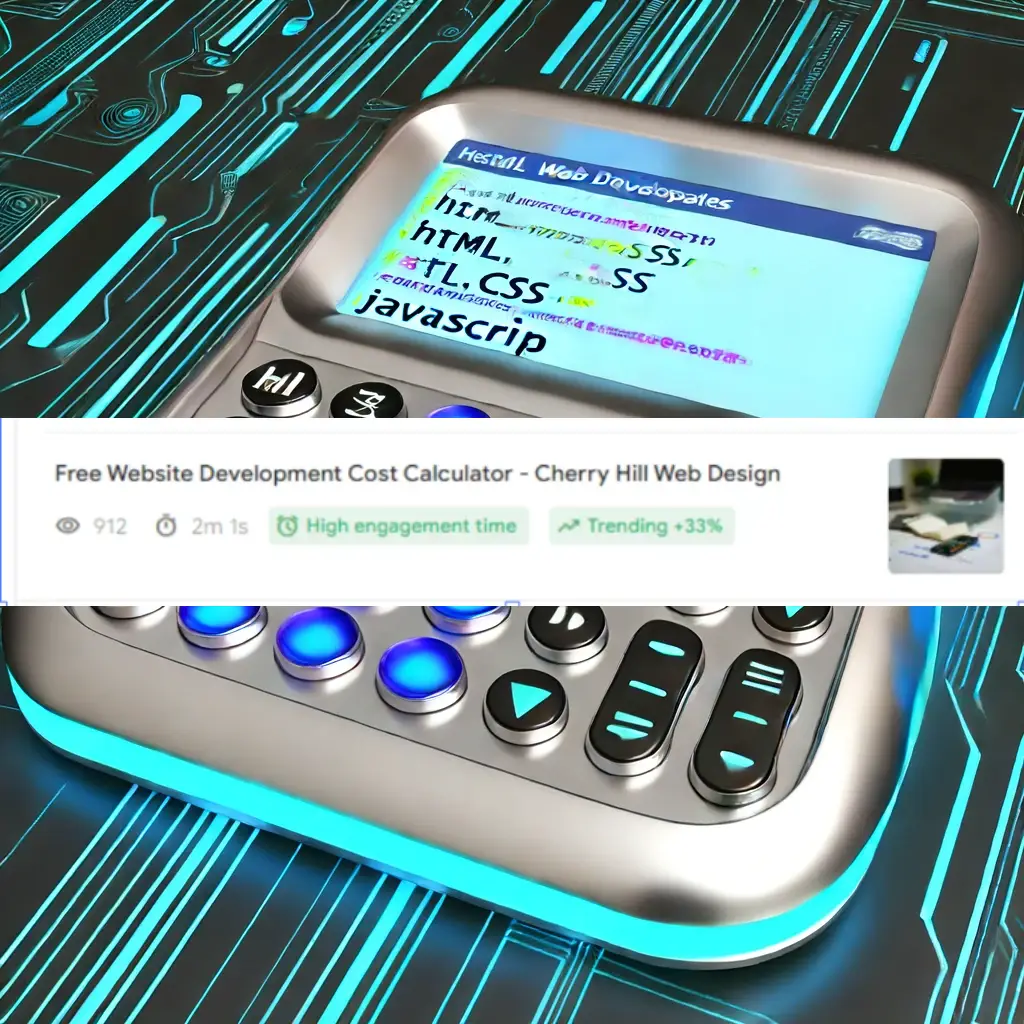
How to Switch Desktop Version Mobile Site: Step-by-Step Guide
Many users prefer to view the desktop version of websites on their mobile devices for better functionality and a more familiar interface. Switching from a mobile site to a desktop version is a simple task that can greatly enhance your browsing experience. Whether you're using Safari on an iPhone or Chrome on an Android device, there are straightforward steps to make the switch.

For iPhone and iPad users, it's about tapping the "aA" icon in Safari to request the desktop site. Android users often use the three-dot menu in Chrome, where they can navigate to settings and toggle on the desktop site option. These methods ensure you get the full web experience, no matter what device you’re using.
Understanding how to switch between desktop and mobile views is crucial, especially for users who need all the features available on a full site. By knowing these quick tips, your online navigation will become much smoother and more efficient.
Key Takeaways
- Switching to desktop view on mobile is quick and easy.
- Safari and Chrome have specific options to toggle desktop versions.
- Desktop views provide more features and a familiar interface.
Understanding the Desktop and Mobile Site Paradigms

The desktop version of a website typically features larger images, more content, and complex layouts. These sites are optimized for larger screens and often utilize mouse-based navigation.
On the other hand, a mobile version is designed for smaller screens. It usually has simplified content and layout, making it easy to navigate with touch-based interaction.
Responsive design is a method where a single site adapts to different screen sizes. This approach uses CSS media queries to adjust the layout, ensuring that the site looks good on both desktop and mobile devices.
Websites that utilize responsive design have the advantage of maintaining a consistent look and feel across all devices without needing separate URLs for the desktop and mobile versions.
Some websites still use separate versions for desktop and mobile, creating distinct designs for each. This approach can sometimes offer a more tailored user experience but requires more maintenance.
The desktop site often includes advanced features and capabilities that may be stripped down or reconfigured in the mobile site to enhance usability and performance on smaller screens.
In summary, understanding the differences between desktop and mobile sites is essential for optimizing user experience across various devices.
Navigating Browser Options for Desktop Viewing

Switching to the desktop version of a website can be very useful on mobile devices. This can often be achieved by using specific browser features, adjusting browser settings, or using developer tools.
Using Browser Request Features
Most mobile browsers offer a built-in feature to request the desktop version of a website. In Safari on an iPhone or iPad, you can tap the aA icon in the URL bar and select "Request Desktop Website". This action will reload the site in its desktop view.
Google Chrome on both Android and iOS also provides a handy way to switch. Simply tap the three-dots menu at the top-right corner, and select "Desktop site". The webpage will reload, offering the full desktop experience.
Firefox and Opera Browser have similar features, typically accessible from their respective menu options.
Changing Browser Settings Manually
If you often need the desktop view, changing browser settings can save time. In Google Chrome on your phone, open the three-dots menu, go to Settings, select Site settings, and toggle on Desktop site. This sets the desktop view as default for every site.
For Safari, there isn't a universal setting to always request desktop sites. You will need to enable it individually for each site via the aA menu in the address bar.
Firefox users can tap the menu button, choose Request Desktop Site, and this preference will remain active until manually turned off.
Utilizing Developer Tools
For more advanced users, Developer Tools can be helpful. In Google Chrome on a desktop, right-click anywhere on the page and select Inspect. Toggle the device toolbar (Ctrl + Shift + M) to switch between mobile and desktop views.
Using Safari’s Developer Tools on Mac, enable the "Develop" menu in Preferences. Then connect your iPhone via USB and select the device from the Develop menu. You can request a desktop view through this setup as well.
Firefox users can use the "Responsive Design Mode" found under the Web Developer section. This powerful tool also allows toggling between mobile and desktop views easily.
These different techniques ensure that users can view the full desktop version whether they are using Chrome, Safari or Firefox.
Platform-Specific Desktop Access Methods

Switching to the desktop version of a site can vary depending on the device and browser you're using. Below are instructions for accessing desktop sites on Apple iOS devices and Android devices.
On Apple iOS Devices
For users with iPhone or iPad, switching to the desktop version of a website is straightforward. In the Safari browser, tap the "aA" icon in the bottom-left or -right corner of the address bar. From the pop-up menu, tap "Request Desktop Website." This action will reload the page in its desktop layout.
For iOS 12 users, the process is a bit different. Tap and hold the refresh icon in the address bar until the "Request Desktop Site" option appears. This method is specific to older iOS versions.
Additionally, some third-party browsers like Chrome on iOS also allow desktop mode. Open Chrome, tap the three dots in the bottom-right corner, and select "Request Desktop Site."
On Android Devices
On Android devices, users can switch to desktop versions using their preferred browser. In Google Chrome, tap the three dots in the top-right corner, then scroll down and check the box next to "Desktop site." This will reload the current page in desktop mode.
In Firefox, tap the three dots in the top-right corner, then select "Desktop site." This option adjustments the view every time you toggle it.
For users of Microsoft Edge on Android, tap the menu button (three dots at the screen's bottom), and select "View desktop site." This choice will ensure the site loads in desktop format.
Some users might prefer using browser extensions or add-ons to force desktop mode in their daily browsing. These tools can also provide added features and customization. Visit the relevant app store for the Chrome Web Store or Firefox Add-ons to find suitable extensions that support desktop view functionality.
Enhancing User Experience

Improving user experience when switching from mobile to desktop versions involves careful adjustment of website settings and optimization of zoom and resolution features. These changes can significantly enhance readability and navigation on mobile devices.
Adjustment of Website Settings
Adjusting website settings on mobile devices is essential for a seamless user experience. Users can request the desktop version of a site by adjusting their browser settings. For instance, in Apple's Safari on iPhone and iPad, tapping the "aA" icon in the bottom-right corner allows users to request the desktop version. On Google Chrome, users can access the desktop site by selecting “Request Desktop Site” from the menu.
Using browser extensions or add-ons can also be helpful. Extensions like those available on the Chrome Web Store enable desktop view functionality, enhancing the usability of websites. Setting your browser to show the desktop site as default can save time and improve consistency across web pages.
Improving Visibility Through Zoom and Resolution Settings
Adjusting zoom and resolution settings is crucial for improving visibility. Many mobile browsers allow users to zoom in and out on webpages, ensuring text and images are easily readable. Features such as "pinch to zoom" can significantly enhance the user experience by allowing greater control over content size.
Setting the appropriate resolution on mobile devices can also make a difference. Higher resolution settings provide clearer images and text, though they may slow down the loading times. Thus, balancing resolution with loading speed is key.
Desktop browsers like Microsoft Edge offer various tools for adjusting viewing preferences, which can make a significant difference for users who frequently switch between mobile and desktop versions. Ensuring these settings are optimized can greatly enhance the user's overall experience.
Frequently Asked Questions

Switching to desktop mode on mobile devices can be straightforward if you know where to look in your browser's settings. Here are the specific steps for different browsers and devices.
How can I enable desktop mode in Chrome on my iPhone?
To enable desktop mode in Chrome on iPhone, open Chrome and tap the three dots in the top-right corner. Select "Request Desktop Site" from the menu options.
What steps are needed to activate desktop mode on Android's Chrome browser?
Open Chrome on your Android phone. Tap the three dots in the top-right corner. Scroll down and tap "Desktop site" to enable the desktop view for the current tab.
Is there a way to permanently turn off desktop mode on an Android device?
To permanently turn off desktop mode on Android's Chrome browser, go to Chrome's settings. Tap on "Site settings" and disable the "Desktop site" option.
How do I revert a website to mobile view on my Android phone?
To revert a website to mobile view on your Android phone, tap the three dots in the top-right corner of Chrome and deselect "Desktop site."
Can I open websites in desktop mode by default on my mobile device?
To open websites in desktop mode by default, go to Chrome settings on your Android device. Under "Site settings," enable the "Desktop site" option to set it as the default view.
What is the process to switch from mobile to desktop view in Safari on iPhone?
In Safari on iPhone, tap the "aA" icon in the top-left corner of the screen. Select "Request Desktop Website" to switch from mobile to desktop view.





















